Postcolonial Language Imperialism in Africa
The Latter-day Saints Missionary Program
DOI:
https://doi.org/10.36950/lpia-01-01-2025-9Keywords:
African languages, Church of Jesus Christ of Latter-day Saints, English language hegemony, language policy and planning, missionary linguisticsAbstract
This paper aims to investigate the neocolonial implications of mission language planning, particularly how The Church of Jesus Christ of Latter-day Saints’ (LDS Church) mission program relates to postcolonial African language policies. Beginning with a conceptual overview of Anglophone linguistic hegemony engrained in African language planning, the investigation covers a detailed inquiry into the LDS Church’s mission operations through contemporary missionary language training and practices. Mixed methods analysis of the languages of instruction reveals a Eurocentric bias in the selection of languages within the LDS Church's Missionary Training Centers, emphasizing the need for a more inclusive and contextually relevant approach to language planning and assignment. Interviews conducted with members of the Church, having served missions on the African continent, further support this conclusion. The implications of conducting mission operations in Africa from an Anglocentric perspective relate to postcolonial discourse on power and exclusion in multilingual ecologies. Considerations for future studies include further documentation of the perspectives of speakers of African languages engaged in mission-related practices within the LDS Church.
Downloads
References
African Studies Center (2023). Exploring Africa. Michigan State University. Retrieved January 15, 2023, from ttp://exploringafrica.matrix.msu.edu/country-overview/.
Baker, W. & Ishikawa, T. (2021). Transcultural Communication Through Global Englishes: An advanced textbook for students. Routledge.
Bamgbose, A. (1999). African Language Development and Language Planning. Social Dynamics, 25(1), 13–30.
Bennet, A. & Fu, K. (2014, August 20). Putting Eternal Salvation in the Hands of 19-Year-Old Missionaries. The Atlantic. https://www.theatlantic.com/national/archive/2014/08/young-restless-and-preaching-mormon/378760/.
Call, J. (2013, December 28). Hastening the work in Ghana MTC. Deseret News. https://www.thechurchnews.com/2013/12/28/23223710/hastening-the-work-in-ghana-mtc.
Church of Jesus Christ of Latter-day Saints (2025). Statistics and church facts: Total church membership. Retrieved March 27, 2025, from https://newsroom.churchofjesuschrist.org/facts-and-statistics/.
___ (2024). A New Missionary Training Center to Be Created in Democratic Republic of the Congo. Retrieved March 27, 2025, from https://newsroom.churchofjesuschrist.org/article/missionary-training-center-democratic-republic-of-congo.
___ (2022a). Topics and Background. Retrieved December 14, 2022, from https://www.newsroom.churchofjesuschrist.org/topics-and-background.
___ (2022b). Someday, language barriers will be a thing of the past. Retrieved April 25, 2025, from https://www.churchofjesuschrist.org/inspiration/someday-language-barriers-will-be-a-thing-of-the-past.
___ (2004). How Can I Better Learn My Mission Language? In Preach My Gospel: A Guide to Missionary Service, pp. 127–135. Church of Jesus Christ of Latter-day Saints.
___ (1981). Doctrine and Covenants. Church of Jesus Christ of Latter-day Saints.
Costley, T., et al. (2022). Translanguaging spaces and multilingual public writing in Zambia: tracing change in the linguistic landscape of Ndola on the Copperbelt. Journal of Multilingual and Multicultural Development.
Errington, J. (2008). Linguistics in a Colonial World: A Story of Language, Meaning, and Power. Blackwell Publishing.
Foreign Service Institute. (n.d.). Foreign Language Training. U.S. Department of State. https://www.state.gov/foreign-service-institute/foreign-language-training.
Githiora, C. (2018). Sheng: the expanding domains of an urban youth vernacular. Journal of African Cultural Studies, 30(2), 105–120.
Hartshorne, J. K., Tenenbaum, J. B., & Pinker, S. (2018). A critical period for second language acquisition: Evidence from 2/3 million English speakers. Cognition, 177, 263–277.
Hurlbut, D. D. (2018). The LDS Church and the Problem of Race: Mormonism in Nigeria, 1946–1978. The International Journal of African Historical Studies, 51(1), 1–16.
Irvine, J. T. & Gal, S. (2009). Language Ideology and Linguistic Differentiation. In A. Duranti (Ed.), Linguistic Anthropology: A Reader (2nd ed., pp. 402–434). John Wiley & Sons.
Makoni, S. & Makoni, B. (2009). English and Education in Anglophone Africa: Historical and Current Realities. In Wong, M. S., & Canagarajah, S. (Eds.), Christian and Critical English Language Educators in Dialogue: Pedagogical and Ethical Dilemmas (1st ed., pp. 106–119). Routledge.
Mensah, E. (2012). Youth Language in Nigeria: A case study of the Ágábá Boys. Sociolinguistic Studies, 6(3), 387–419.
Nakayiza, J. (2016). The sociolinguistic situation of English in Uganda: A case of language attitudes and beliefs. In Ugandan English, pp. 75–94. John Benjamins Publishing Company.
NPR Staff (2014, June 7). Lessons From the Language Boot Camp for Mormon Missionaries.
NPR. https://www.npr.org/2014/06/07/319805068/lessons-from-the-language-boot-camp-for-mormon-missionaries.
Opoku-Amankwa, K. (2009). English-only language-in-education policy in multilingual classrooms in Ghana. Language, Culture and Curriculum, 22(2), 121–135.
Pennycook, A. & Makoni, S. (2005). The Modern Mission: The Language Effects of Christianity. Journal of Language, Identity & Education, 4(2), 137–155.
Sanneh, L. (1989). Translating the Message: The Missionary Impact on Culture. American Society of Missiology Series, 42(2), 13–55.
Schneider, A. (2022). Language Policy and Planning in A Church-Sponsored ESL Program. International Journal of Christianity and English Language Teaching, 9(4), 4–34.
Wolff, H. E. (2016). Basic sociolinguistic facts: languages, dialects, numbers of speakers. In Language and Development in Africa: Perceptions, Ideologies and Challenges, pp. 284–304. Cambridge University Press.
Published
Issue
Section
License
Copyright (c) 2025 Caroline Story

This work is licensed under a Creative Commons Attribution 4.0 International License.


